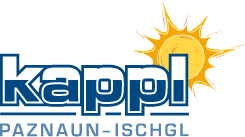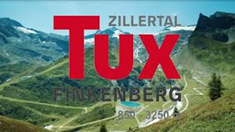The common use of agricultural and forestry areas in Tyrol goes back to Middle Ages (van Gils et al. 2014) and mostly related to the collective ownership (CO) termed Agrargemeinschaften (AG). According to the Tyrolean Federal Land Management Act (Flurverfassungsgrundgesetz of 1996), an AG is an earmarked community of persons (usually farmers), which jointly administers and uses certain properties on the basis of old documents or old practice. The AG is a public corporation (Lang 1991) therefore considered as a legal entity with rights, obligations and capable to act. It can conclude contracts and may be held liable for criminal conduct. Administrative statutes and business plans oblige the members of the agricultural communities to use community resources in a sustainable manner, e.g. in the form of rules on the location and extent of timber extraction in forestry use. Appropriate management by several entitled persons is ensured by institutional arrangements (Seher 2007). According to Seher (2007), AG are part of a common property regime because they have collective responsibility for the areas and resources.
According to the type of common land and the purpose of an AG, a distinction should be made between (mountain) pasture and forest AG. In larger communities there are also mixed forms with forests and agricultural land like alpine pastures and/or home grazing. In general AG can be independent or regulated by the Tyrolean Agricultural Authority. Regulated means that there is a decision on which properties and forms of use are available and how many members are involved in an AG. In the 1950s and 60s, much communal land was transferred to AG so that they could administer the land in trust. In a ruling by the Constitutional Court in 1982, this practice was already criticised as illegal because the AG thus became the owner of municipal property and could thus also divide the revenues among themselves. It was not until a ruling by the Administrative Court in 2008 that it was the municipalities and not the AG that were entitled to dispose of the municipal property. Therefore, in such cases, communal property has come into existence, which is now jointly owned by the municipality and the authorised users (members) in an atypical manner and is organised as an AG. The result is that themunicipality is entitled to the intrinsic value of the community property, while the members of the AG retain the right of use.
Recently, therefore, regulated AG have been categorized as typical (with their own land) or atypical community property AG (Gemeindegutsagrargemeinschaft, only pastoral andforestry rights; other withdrawal rights and their revenues are held by the municipality). The federal authorities only know about these type of AGs. There is no joint database concerning the number of all AG in Tyrol. Van Gils et al. (2014) quantify the number of AG with 2000, but according to the federal administration the total number is unknown. Putzhuber, a member of the federal administration responsible for the AGs in Tyrol, only mentions that there are 1148 regulated AG with 255 typical and 79 atypical community property AG.

With 550 members Kappl-See is the largest AG in Tyrol. With 2571 inhabitants, Kappl is the second and largest municipality in the Tyrolean Paznaun Valley in the far west of Tyrol. The municipality is located in the district of Landeck and has more than 2500 inhabitants. See is the first village at the entrance to the Paznaun valley with almost 1300 inhabitants. The village was founded around 1400 by Serfauser and Fisser farmers. Today, both villages live mainly from tourism and present themselves here as an alternative to the nearby mass tourism in Ischgl. Today’s AG was founded as early as 1852 as the Kappl-See forest community. The forest areas were administered by the municipalities.
In the course of the regulations around 1970, the AG was formed. Until 2014, the members were responsible for managing the land. According to the ruling of the Administrative Court, the administration of the AG’s territory is once again the responsibility of the municipality, which makes the AG Kappl-See an atypical municipality-owned AG.
First and foremost, the AG owns large areas of forest. In addition, however, there are also small areas near the settlement area, which makes them interesting for the respective municipality. Alpine pastures are not owned by them, but by other, small communities. Income other than timber sales comes from leasing areas to ski resorts. To a small extent, the AG also holds shares in cable car companies.

The AG Fügen-Fügenberg is located in the Zillertal, a southern side valley of the Inntal. Fügen is considered the principal “town” of the front area of the Zillertal. The village is situated on the broad alluvial cone of the Rischbach and consists of several formerly independent districts and farm settlements that were combined in the course of history. The economy is characterised by agriculture, trade, commerce, industry and last but not least tourism. Tourism benefits from the two ski resorts Hochfügen-Hochzillertal and Spieljoch. Companies of international importance are located in the furniture manufacturing and wood processing industries.
The municipality of Fügenberg is one of the larger municipalities in the Zillertal in terms of area. It stretches above Fügen over wide mountain slopes and narrow valleys of the Tux Pre-Alps. The area is largely located on a slope. Fügenberg is closely intertwined with Fügen in economic and cultural terms. Both municipalities together are home to around 5600 people. It is one of the largest collective ownerships in Tyrol. It was founded centuries ago, but was not regulated until 1972 and converted into an atypical community of property AG in 2008. 267 members have the right to purchase timber, firewood and fence wood. The chairman of the agricultural community is no longer as important as before. He has the task of ensuring the allocation of wood to the members and the communication between the members and between the members and the asset managers. All other (economic) decisions are made by the communal asset managers of the two communities. Only when major decisions have to be made do the chairman and the other members of the committee (four persons per municipality) decide collectively with the municipalities. Once a year there is a general meeting where all members attend and discuss what concerns the collective property (finances, problems, etc.).
The AG owns 2200 hectares of forest and small alpine pastures. The forest property of the Agrargemeinschaft Fügen-Fügenberg covers a large part of the area of the cadastral municipality of Fügenberg. Of these, 80% are protection forests. Consequently, the sustainable management of the forests is its main concern. With its income, the AG partly finances the forester and four forestry employees. In addition, they receive income from areas leased by cable car companies.

The AG Finkenberg is also located in the Zillertal but far more South than Fügen-Fügenberg. The municipality has more or less 1400 inhabitants. Finkenberg is located about three kilometres southwest of Mayrhofen, at the entrance to the Tuxertal valley, between the foothills of the Penken and the Grinberg peaks. It is the second largest municipality in the Zillertal after Mayrhofen in terms of area.
The municipal area includes several valleys as well as the Schlegeis reservoir and leads up to the Italian border. There are several Kees (glaciers) in the municipality. The municipality consists of a number of hamlets and farms that belong together. Economically, the area is characterised by small craft businesses and above all by tourism. The hamlet of Ginzling positions itself as an alternative for soft tourism and mountain climbing. In the hinterland, alpine pasture farming and the energy industry (Schlegeis reservoir) dominate.
Finkenberg is one of the four municipalities on which the Nature Park HochgebirgsNaturpark Zillertaler Alpen is located. The AG was regulated in 1980. In contrast to Fügen-Fügenberg, this collective ownership is not an atypical community property AG, but a typical property AG in which the municipality of Finkenberg owns 25% of the collective property. The AG has 61 members, most of whom are still famers (at least part-time) in this steep mountain area. In total, they own 873.2 ha of land, with just 33 ha being actively used pasture land. The rest is forest with a protection forest share of 90%. The forest property of the Finkenberg AG is located entirely in the cadastral municipality of Finkenberg. The chairman decides on most matters himself. However, in the case of larger properties and decisions on major financial expenditures, the AG committee (three members of the AG, the municipality represented by the mayor, the forest ranger and the chairman) must decide collectively. In the case of a sale of land of 200m² or more, a general meeting resolution must be passed.
The day-to-day decisions regarding forest management are made by the forest ranger. The most important source of income is the leasing of areas for ski slopes and snow-making facilities. Timber prices on the market in Europe are low. Since the effort required for timber harvesting in the steep terrain of the AG is quite high, and since a large part also meets poor quality criteria due to historical use (litter removal, cutting of branches), the AG cannot secure its income through timber sales alone.
